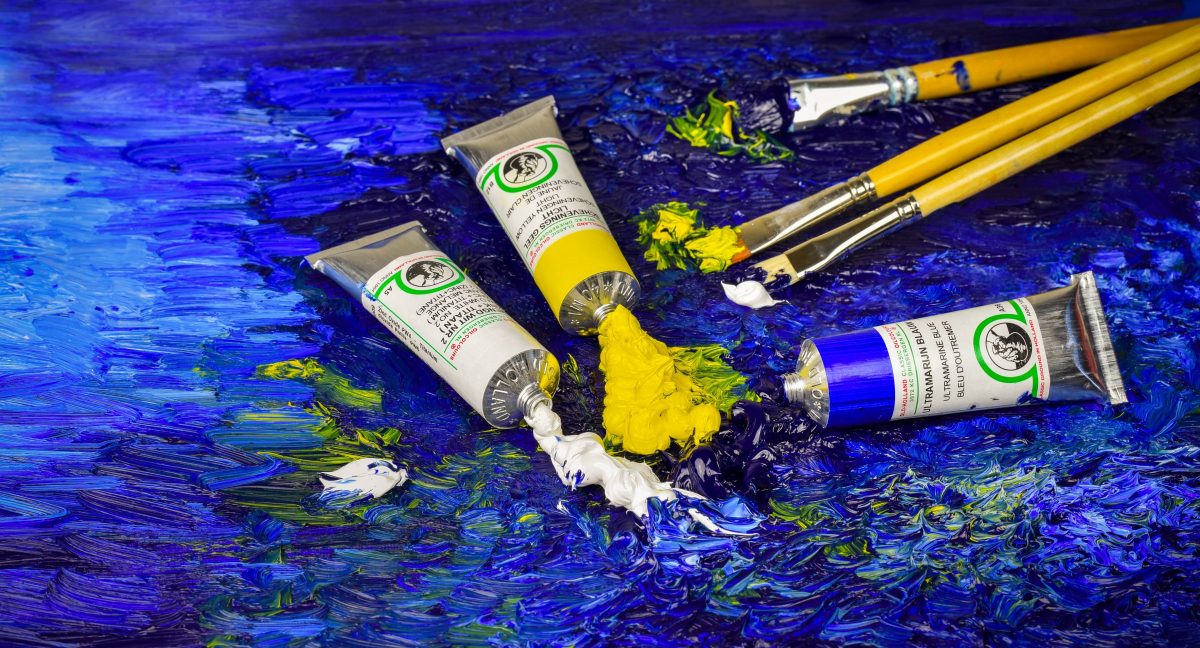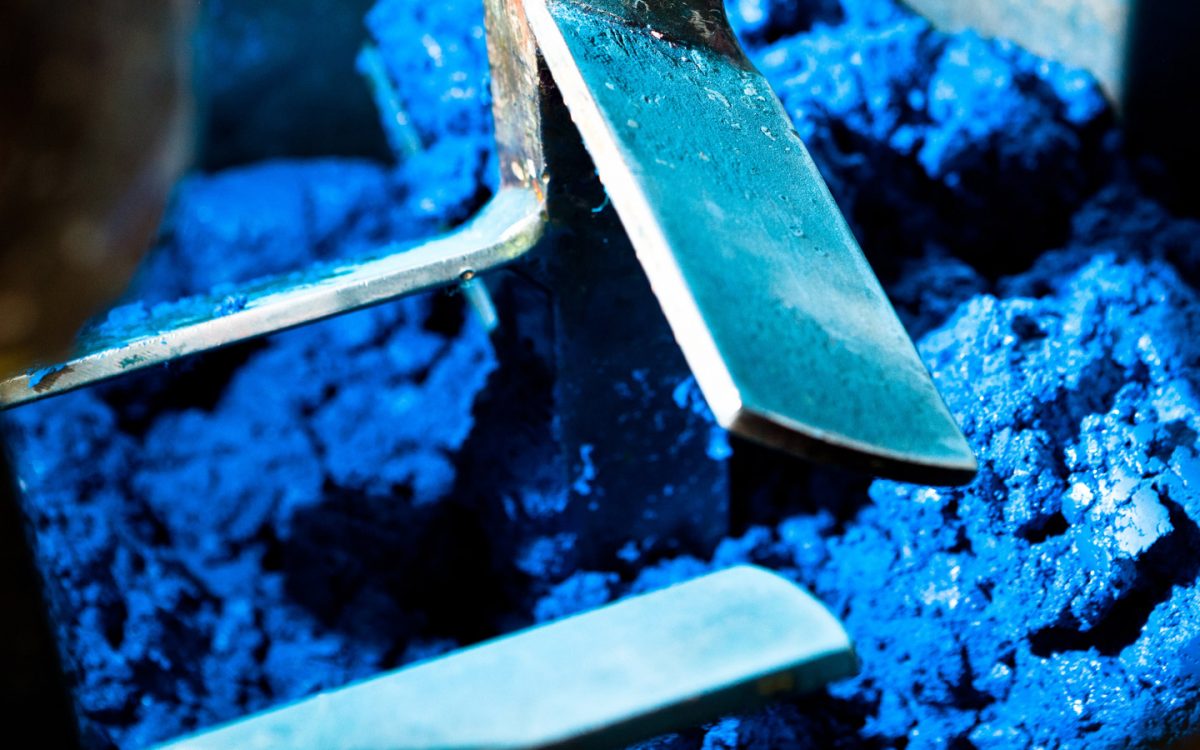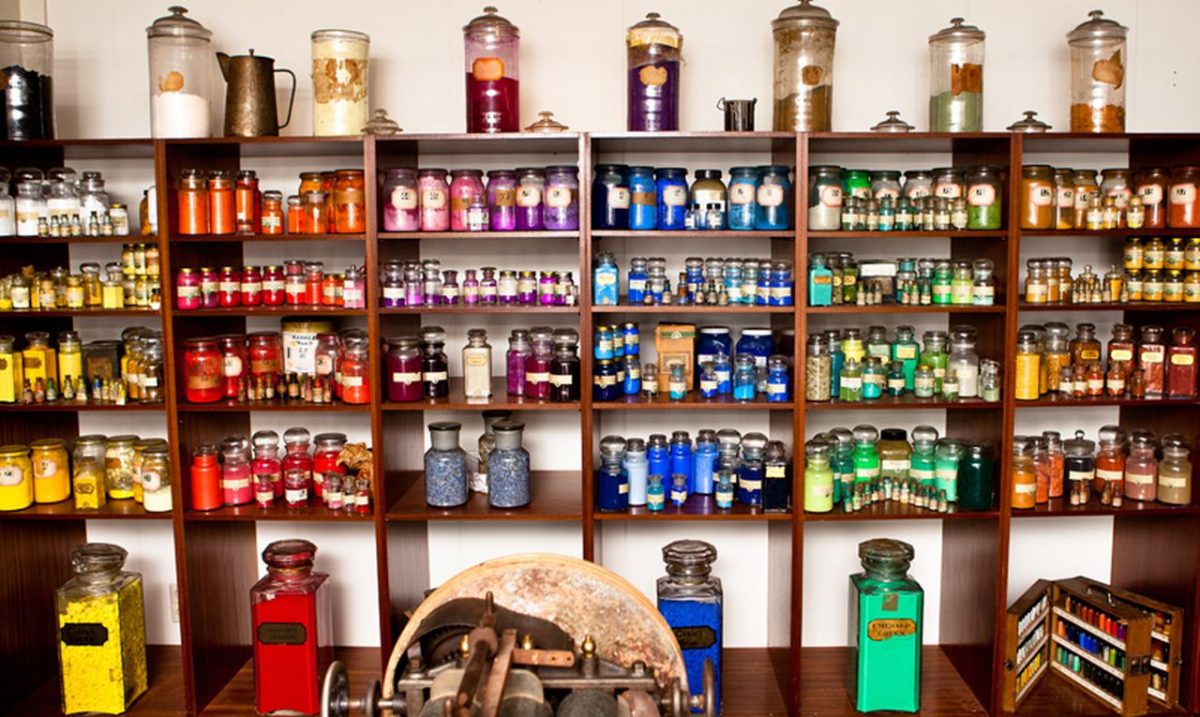
Everything you need to know about paint (part 1)
Brief overview of the most important characteristics of paint and pigments
An artist’s vision plays a particularly important role in the creative process. Yet it only constitutes the start of their work on the final image; the next stage is to bring their idea into being using their chosen materials. “From eye to hand, to brush” – that was how Albrecht Dürer described the creative process. The artist always strives to reflect the vision they have in their mind’s eye in the real world as fully and vividly as possible, but their materials do not always prove to be obedient, and often enter into a kind of ‘battle of wills’ with the artist. In some cases, the physical properties of paint may themselves suggest a deeper and more interesting solution to the creative task, while in others, they may lead to failure.
Not only does the material either obey or resist the artist, but it also exerts a certain influence on their perception of the world.
The artist’s main, fundamental material is of course paint. Paint is sometimes referred to as the language of an artist. As the main material in painting, paint, when in the hands of an artist, takes on the power of artistic expression. When transformed into a tone on the color spectrum, and arranged into harmonious color and tonal combinations, they take on the qualities of a genuinely artistic language.
Need we really mention how important it is for an artist to know the properties of paint? The importance and necessity of such knowledge has been commented on ever since antiquity.

The components of paint
The dye
The main component of any kind of paint is the dye, which takes the form of a finely-ground colored powder, known as pigment (from the Latin word pigmentum, meaning ‘color’). The pigment, which determines the color tone of the paint, can thus be seen as a synonym for paint, and people do not usually draw any distinction between the words ‘pigment’ and ‘paint’ in everyday conversation. For experts, however, pigment is merely the main component of paint, and the two words cannot therefore be said to mean exactly the same thing.
The binder
Another vitally important component of paint is the binding agent, whose immediate purpose is to bind the tiny particles of pigment together and make them adhere to the surface of the canvas or the paper. The role of the binder is not limited to this, however. It determines the texture and the optical properties of paints, and the question of which binding material to apply – glue, emulsion or oil – determines whether the paints will be watercolours, tempera paints, or oil paints. The binding material also affects the tone of the color to some extent, since each one has a different refractive index for light. If you take a particular pigment – ultramarine, let’s say – it will have different levels of saturation, brightness and tone in oil paints and gouache paints.
Additional substances
Besides these two primary components in the manufacture of paints, they also have various substances added to them, known as ‘plasticizers’, to give the paints a larger or smaller amount of plasticity, affecting the character of the coat, antiseptics that prevent the layer of paint from being destroyed, and also siccatives that make the paint dry more quickly.

Pigments
The pigments used to manufacture artists’ paints must meet certain requirements. Each pigment must correspond to an established color tone template, which depends on the structure of the particles in the pigment, and its ability to reflect, refract and absorb light.
The pigment must have a certain pigment dispersion, i.e. the fineness to which it is ground, which in some cases is achieved through standard mechanical fragmentation, but more often through agglomeration in a mixture of solutions (the wet method), or by heating it in special kilns (the dry method). The finer the grains of pigment, the more transparent the paint will be, and vice-versa. The pigment dispersion is therefore particularly important in the manufacturing of watercolor paints. In some pigments, the tone of the color depends on the dispersion: for instance, finely-dispersed zinc whites take on a blue-ish hue, and sienna increases the degree of saturation.
A very important requirement that is placed on pigment is its ability to withstand light and air, since ultraviolet rays can bring about a chemical reaction in paints, making them appear lighter. Another active element that affects the color tone is the oxygen in the air, together with gases that can cause blackening. Thanks to breakthroughs in the production of pigments and paints, almost all modern artistic paints are ‘lightfast’.
Another property of pigments that is dependent on the degree of dispersion is covering ability, i.e. the ability, measured in grams of pigment, to cover one square meter of a surface in such a way that the light from the underlying basis or clay does not penetrate it. Coverage depends on the structure of the crystals, whose light refraction indexes can vary. Pigments with low dispersion form the basis of opaque paints with body, and those with high dispersion form the basis of glazing paints, i.e. relatively transparent paints.
The ability of one pigment to alter the tone of the coat formed by another pigment, when they are combined, is known as intensity. Organic pigments with high dispersion have a large amount of intensity.
A property that is particularly important in the production of oil paints is the oil content of pigments, i.e. the amount of oil required in order to obtain a normal paint paste made up of 100 grams of pigment. Every pigment requires a specific amount of oil, with some needing more, and others less. Oil volume depends on the total surface area of the particles, but also on the physical and chemical properties of the oil used as a binding agent.
Natural and synthetic pigments
All pigments, and, accordingly, all the paints derived from them, can be divided into two main groups: natural ones and synthetic ones, and the former group can be further divided into organic and non-organic pigments.
Click here for „Everything you need to know about paint (part 2)“







